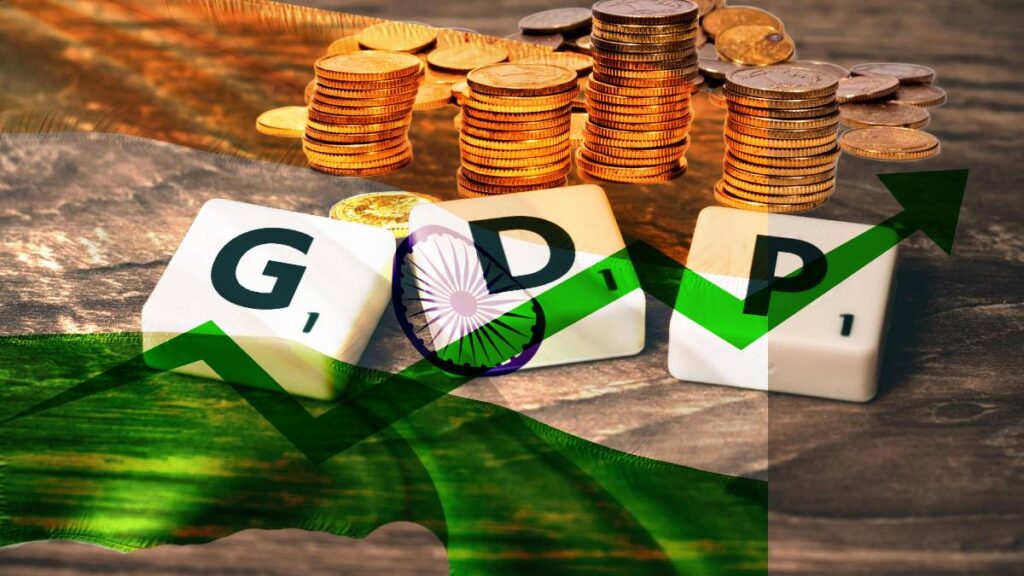During the third quarter of the fiscal year 2023-24, the Indian economy showed remarkable growth, surpassing expectations and defying projections. India’s GDP in Q3 expanded by 8.4% from October to December, continuing its strong momentum after achieving growth rates exceeding 8% in the previous two quarters.
IMF executive director Krishnamurthy Subramanian declared India to be the fastest-growing economy globally. India’s GDP growth in the third quarter exceeded analysts’ estimates by a significant margin.
Data released late on Thursday revealed that India’s economy expanded at its fastest pace in six quarters, driven by strong private consumption and positive trends in manufacturing and construction activities. Reuters had estimated growth in the October to December period at 6.6%.
India’s Economy Set for 8% Growth, Says Former Chief Economic Advisor
Subramanian, the former chief economic advisor to the Indian government, stated on CNBC’s “Squawk Box Asia” that India is poised for about 8% growth this year.
The Indian government also increased its GDP growth forecast for fiscal year 2023-24 to 7.6% from the earlier 7.3% projection.
Subramanian attributed India’s economic growth to a shift in the government’s focus towards higher capital expenditure, which has significantly increased over the last few years.
Official government data released on Thursday revised the full-year FY24 GDP growth estimates to 7.6% from the previous projection of 7.3%.
Driven by strong private-sector investment and increased spending in services, Q3 GDP growth surpassed projections by the Reserve Bank of India (RBI), which forecasted real GDP growth for FY24 at 7%, Q3 at 6.5%, and Q4 at 6%.
Interim Budget: Narrowing Deficit, More Infrastructure Spending
In early February, the Indian Finance Ministry presented a fiscally prudent interim budget. It is estimated that the fiscal deficit for the financial year 2025 will narrow to 5.1% from the revised 5.8% for 2024. The government emphasized its plan to boost spending on infrastructure.
According to the interim budget, capital expenditure is projected to rise by 11.1% to 11.11 trillion Indian rupees ($133.9 billion) in fiscal year 2025. Additionally, tax revenue for the year is expected to increase by 11.4% to 38.31 trillion rupees.
Expectations for Union Budget Post General Elections
Subramanian expressed expectations for similar fiscal prudence in the upcoming full union budget, slated for release after India’s general elections. He anticipates a continued focus on capital expenditure and responsible fiscal management.
The recent GDP data has bolstered Prime Minister Narendra Modi’s economic record ahead of the upcoming national election. Analysts at Commerzbank noted that the strong growth momentum will further support the RBI’s inclination to maintain the current interest rate at 6.5% for the foreseeable future.
Chief Economist of SBI Forecasts Near 8% Growth in India’s GDP in FY24
According to Soumya Kanti Ghosh, Group Chief Economic Adviser at the State Bank of India, India’s GDP growth in the FY24 will likely reach nearly 8%. He stated that the third quarter GDP numbers surprised many positively and indicated that the right policy perspectives can surpass unrealistic expectations.
Ghosh mentioned that based on the estimated FY24 GDP growth of 7.6%, the Q4 GDP growth is anticipated to be around 5.9%, though he believes it might be higher than projected.
Economists noted a 190 basis points (bps) disparity between GDP and GVA growth, which suggests higher growth in the government’s net indirect taxes and possibly lower subsidies. The second estimate for FY24 places real GDP 30 bps higher at 7.6%, while real GVA remains unchanged at 6.9%.
Emkay Global Economist Highlights FY24 GDP Trends
Madhavi Arora, Lead Economist at Emkay Global Financial Services, observed that despite a slightly higher FY24 nominal GDP growth of 9.1% compared to the initial estimate, its value is 10% lower. This implies that Q4 GDP/GVA growth is anticipated to slow to 5.9%/5.4%, suggesting most of the growth moderation will occur in Q4.
Arora explained that production-side GVA growth tends to be less volatile, and the significant GDP-GVA gap in FY24 is expected to normalize in the next fiscal year.
Also Read: WhatsApp Search by Date: How It Works and What You Need to Know
Google CEO Sundar Pichai Addresses Gemini AI Controversy, Calls it ‘Completely Unacceptable’
